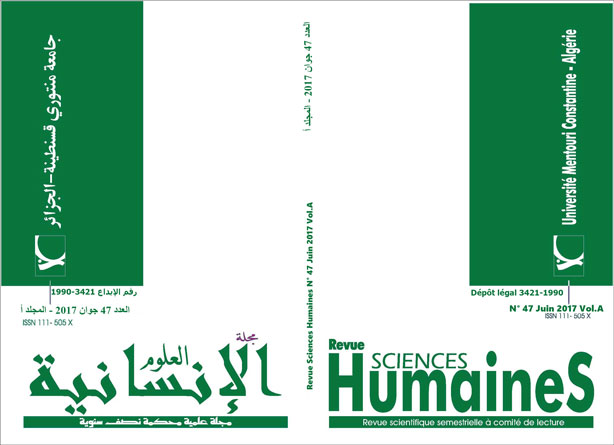The Role of Explicit Teaching Remedy in Enhancing Grammatical and Lexical Cohesive Devices Problem in Second Year Students Writing’ s at the University of Constantine 01
الكلمات المفتاحية:
cohesion، lexical، grammatical، cohesive devices، explicit teachingالملخص
Cohesion is the use of grammatical and lexical cohesive devices to tie ideas across texts; it is also an important element for maintaining coherence in any piece of discourse. Researchers agreed that this problematic area to EFL learners; however, no curative medicine has been given yet. Therefore, this study focuses on the explicit teaching approach with the purpose of teaching different grammatical and lexical ties to second year students of English at the University of Constantine 1. An experimental design is used to test the efficacy of this approach where two experimental (EXP) and control (CTR) groups undertook the tests. After the analysis of both the pre- and post- tests scores, the results revealed that the explicit teaching is successful in solving cohesive devices problem simply because the improvements in the EXP group is far higher than those of the CTR group, though there are some aspects such as: ellipsis and substitution which have not enhanced significantly.
التنزيلات
المراجع
Chiang, S.Y. (1999). Assessing Grammatical and Lexical Features in L2 Writing Samples: The Case of French as a Foreign Language. The Modern Language Journal 83 (ii), 219- 232.
Chamot, A. U. (2004). Issue in Language Learning Strategy Research and Teaching. Electronic Journal for Foreign Language Teaching, 1(1), 14- 26.
Cook, G. (1989). Discourse. Oxford: Oxford University Press.
Ellis, R. (2009). Task Based Language Learning and Teaching. Oxford: Oxford University Press.
Fan.M. (2009). An exploratory study of collocation use by ESL students: A task based approach, 37-110.
Flowerdrew, J. (2013). Discourse in English language education. Routledge: London.
Halliday, M.A.K. (1994). An introduction to Functional Grammar. London: Edward Anold.
Halliday, M.A.K. & Hassan, R. (1976). Cohesion in English. London: Longman.
Harmer.G. (2004) . How to Teach Writing. Harlow: Longman.
Hinkel. E. (2004). Teaching Academic ESL Writing. Lawrence Erlbaum Association: Mahwah.
Hyland. K. (1996). Second Language Writing. J. C. Richardes (ed). Cambridge: Cambridge University Press.
Lee. I. (2002). Teaching Coherence to ESL Students: a classroom inquiry journal of language writing, 11, 135- 159.
McCharthy. M. (1991). Discourse Analysis for Language Teachers. Cambridge: Cambridge University Press.
Nation, I.S.P. (2009). Teaching ESL/EFL Reading and Writing. Routledge: New York.
Oshima, A & Hogue, A. (1999). Writing Academic English. London: Longman.
Saeed, J.I. (1997). Semantics. Oxford: Blackwell Publishers.
Oxford Dictionary. (2005). Oxford: Oxford University Press.
Palmer, F.R. (1981). Semantics. Cambridge: Cambridge University Press.
Tally. P.C. & Huiling. T. (2014). Implicit and Explicit Teaching of English Speaking in the EFL Classroom 4 (6). International Journal of Humanities and Social Sciences, 38-46.
Trimmer, J.F. (1996). Writing with a Purpose. Boston: Toranto.
Widdowson, H.G. (2007). Discourse Analysis. Oxford: Oxford University Press.
Yule, G. (1996). Pragmatics. Oxford: Oxford University Press.
Zamel, V. (1983). Teaching those missing links in writing. ELT Journal, 22- 29.












